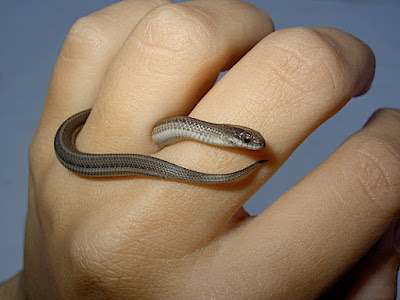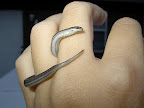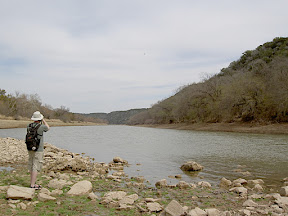(and a real post to follow eventually, I promise!)

Juniper Hairstreak (Callophrys gryneus) at Abilene State Park, March 21, 2009
I hope everyone is getting out and enjoying these signs of spring, at least before it gets too ridiculously hot.
Of fledged Falco, Ceratomia v. Lintneria, and other high-desert grassland musings.























 Jerusalem Cricket (family Stenopelmatidae). I'm going to read a little bit, in quotations, from Field Guide to North American Insects, Ken Kaufmann, 2006.
Jerusalem Cricket (family Stenopelmatidae). I'm going to read a little bit, in quotations, from Field Guide to North American Insects, Ken Kaufmann, 2006.









The picture above was taken during that first visit. Heidi had slipped on a slick rock and found herself sitting in the water momentarily. That was the day, the moment, she baptised her cell phone. It was in her pocket. With its faith renewed, the phone went to a better place. (I think. Heidi you weren't able to resuscitate that device were you?)
Anyhow, Heidi and I found a great rock outcropping for sun-basking as if we were vultures on this particular pour-off pool that is illustrated in the picture above.
I remember basking next to her with strengthened emotions and thoughts toward this wonderful friend of mine. I remember just wanting to hold her hand; but knowing that we were both in seperate lives in those regards. This wonderful friendship was of a respectful platonic nature. That was quite alright by me. This incredible friend of mine.
That picture and that time are of the date: 19 July 2007.





The cottonwoods had yet to foliate on this return trip. That only makes their singing with the wind slightly higher in pitch, but no less meaningful.
They knew 2 years ago, as They know now.
Listen to the Wind.
Hi. ;-)
Anyways, we were afforded some interesting pictures of fellow earthlings during this trip. Heidi took great pictures of Northern Cricket Frog (Acris crepitans) and our first of the year Orange Skipperling (Copaeodes aurantiaca). She always seems to have the eyes for herps that I walk by. I may have walked by that skipperling as well. I like our team. :-)
Butterfly list this outing, just from the top of my head, and in no taxanomical order:
-Eastern Tiger Swallowtail (Papilio glaucus)
-Pipevine Swallowtail (Battus philenor)
-Giant Swallowtail (P. cresphontes)
-Southern Dogface (Zerene cesonia)
-Cloudless Sulpher (Phoebis sennae)
-Juniper Hairstreak (Callophrys gryneus gryneus)
-Henry's Elfin (C. henrici)
-Question Mark (Polygonia interrogationis)
-Red Admiral (Vanessa atalanta)
-American Snout (Libytheana carinenta)
-Sleepy Orange (Abaeis nicippe)
-Little Yellow (Pyrisitia nise)
-Orange Skipperling (Copaeodes aurantiaca)
-Mourning Cloak (Nymphalis antiopa)
-Funereal Duskywing (Erynnis funeralis)
-Juvenal's Duskywing (E. juvenalis)
-Cabbage White (Pieris rapae)
-Texan Crescent (Anthanassa texana)
Heidi has our complete field notes, and lists, of birds and bugs and things for that day.
The following are some pics of a Giant Swallowtail basking near where Heidi and I were basking. While this insect was warming itself as the clouds finally broke, it was also "puddling." The latter term when applied to certain members of the Order: Lepidoptera refers to the insect taking in various minerals and salts found in mud, or in this case wet sedementary rock like this limestone.


 This organism is the size of a dime. The size of its required habitat that remains is ridiculously small as well. But from this perspective, slightly below (not towering above) we get an eyeful of its world. Our world. Its life.
This organism is the size of a dime. The size of its required habitat that remains is ridiculously small as well. But from this perspective, slightly below (not towering above) we get an eyeful of its world. Our world. Its life.
